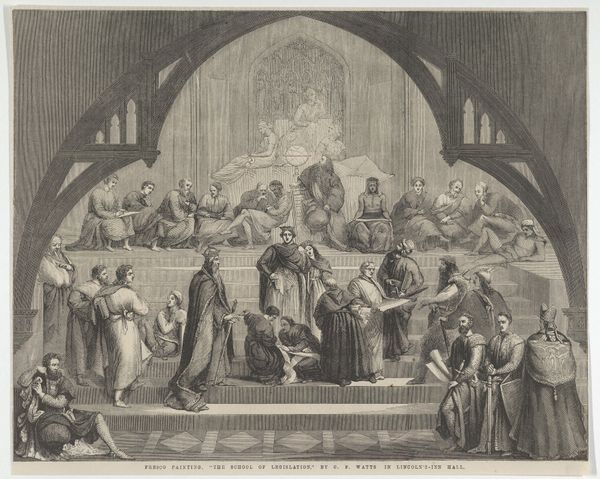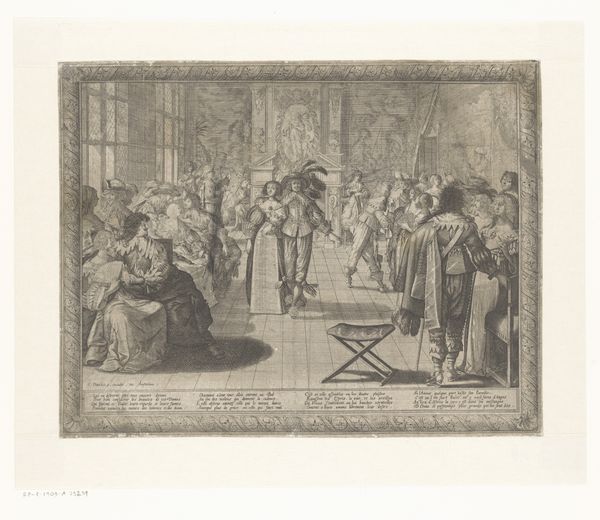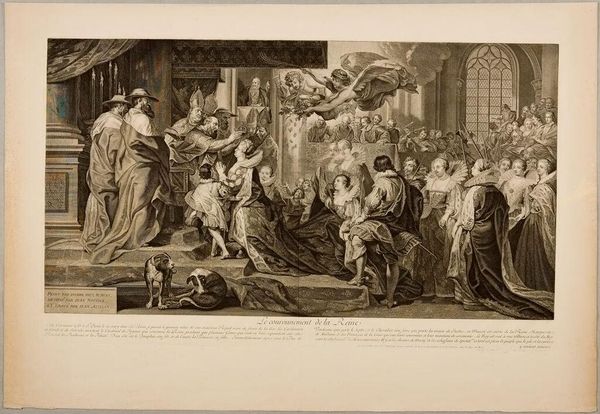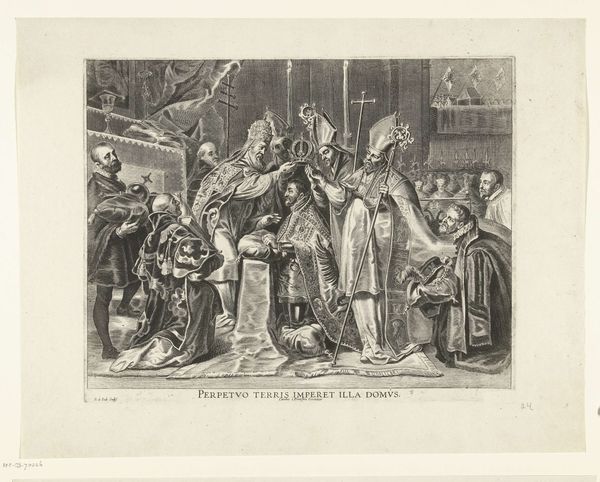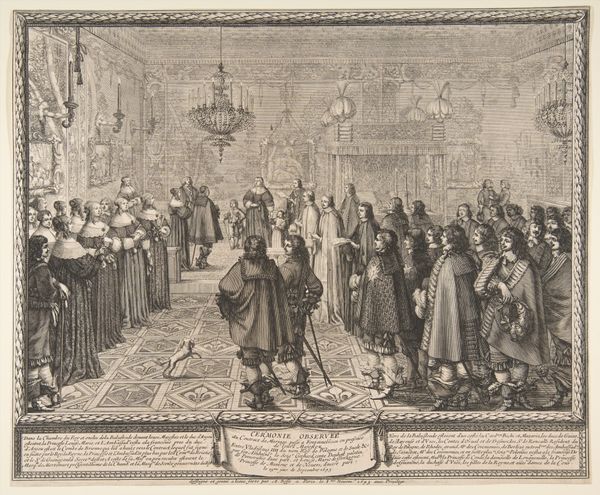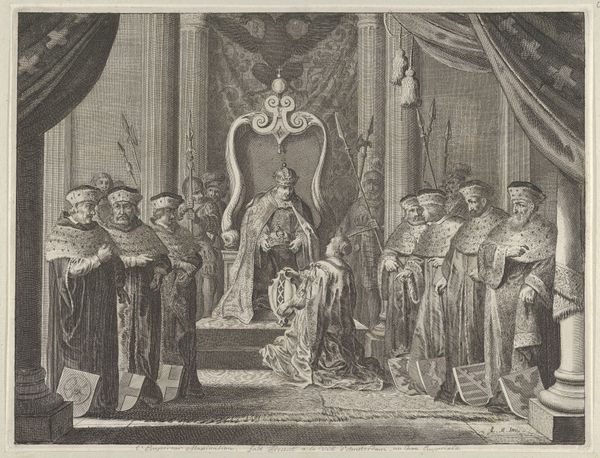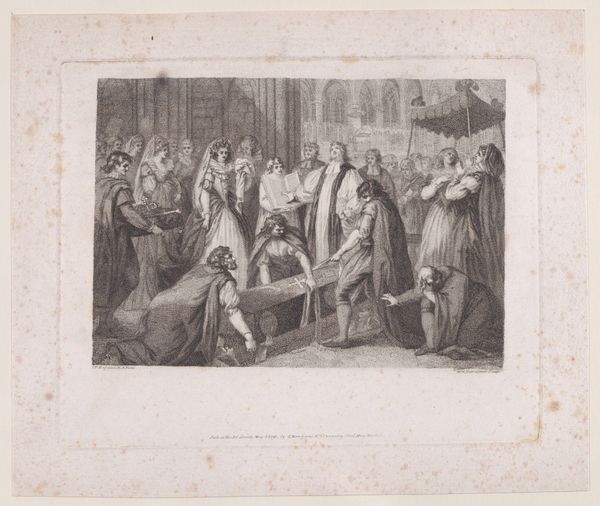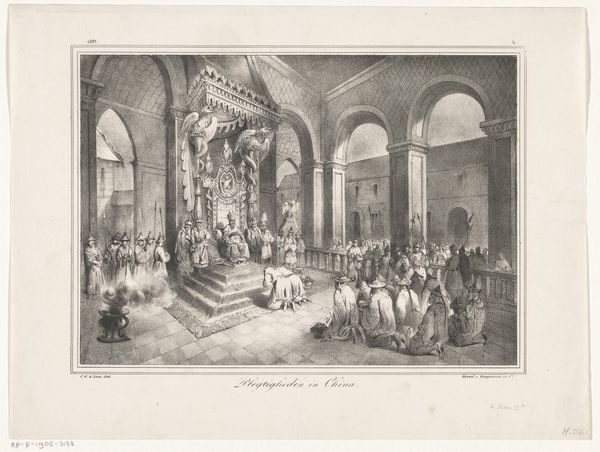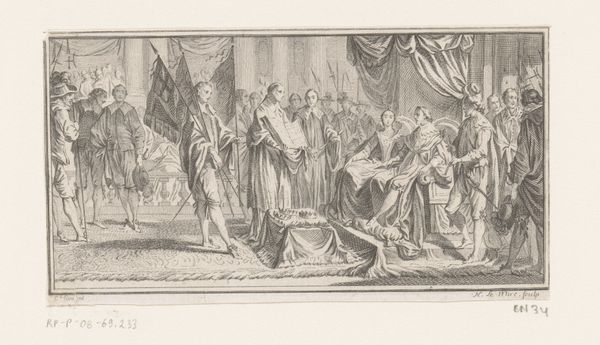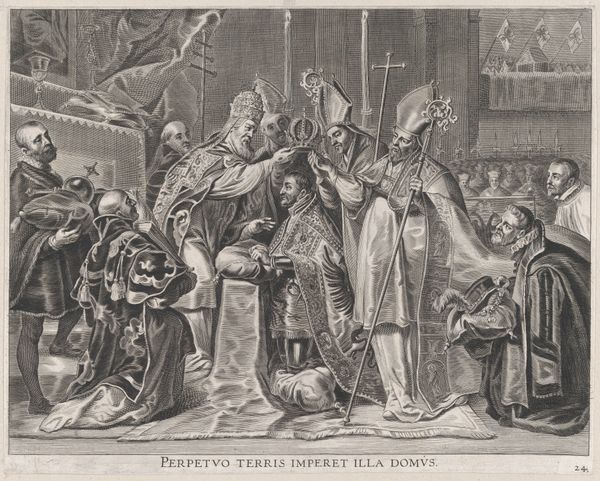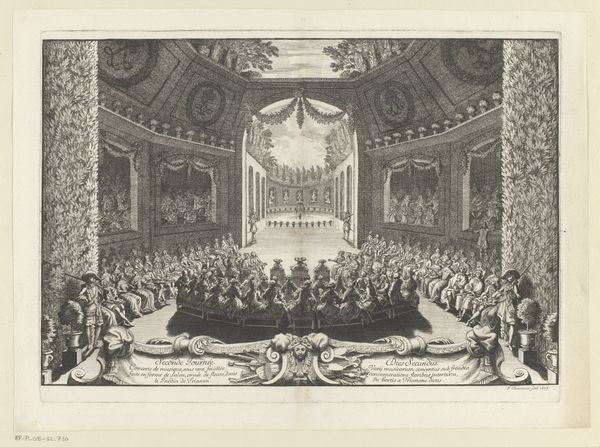
drawing, print, etching, paper
#
drawing
#
neoclacissism
#
toned paper
#
allegory
#
narrative-art
# print
#
etching
#
figuration
#
paper
#
line
#
history-painting
Dimensions: 399 × 492 mm (plate); 553 × 425 mm (sheet)
Copyright: Public Domain
Editor: This etching, "Natural Worship," created in 1794 by Jean-Baptiste Mallet and printed on toned paper, feels incredibly theatrical. The scale of the gathering and the setting...it all suggests a constructed performance. What can you tell me about the social context surrounding its creation? Curator: Indeed. Let’s consider the material conditions of its making and reception. As an etching, this image would have been produced through an intensive process involving specialized tools and skilled labor. Its availability as a print suggests it was intended for relatively wide circulation. What does the shift away from traditional religious spaces to the celebration of the 'natural' within the painting point toward? Editor: Perhaps a growing interest in secularism, particularly in post-revolutionary France. Curator: Precisely. The artist, Mallet, seems to be challenging the power dynamics within religious institutions through the representation of labor within that space, and making reference to consumer accessibility in producing many versions for wider dissemination. Do you notice any references that denote the time of its production? Editor: Now that you mention it, the draped fabric, the classical architectural features like the columns – they indicate an affinity with Neoclassicism, reflecting a specific taste and perhaps a certain class. Curator: Good. The use of these visual elements indicates that this piece is not solely about an intellectualized “nature,” but a culturally and economically defined one. What do you believe its audience at the time may have hoped to see, given the period and production style? Editor: I hadn’t considered how the materials themselves reflect those tensions. Seeing it as more than just a drawing, and rather, an object created under specific labor and social dynamics is definitely eye-opening. Curator: It allows us to see how art, even seemingly idealized scenes, are deeply embedded in and shaped by their material realities. Editor: I will definitely carry this perspective moving forward!
Comments
No comments
Be the first to comment and join the conversation on the ultimate creative platform.
